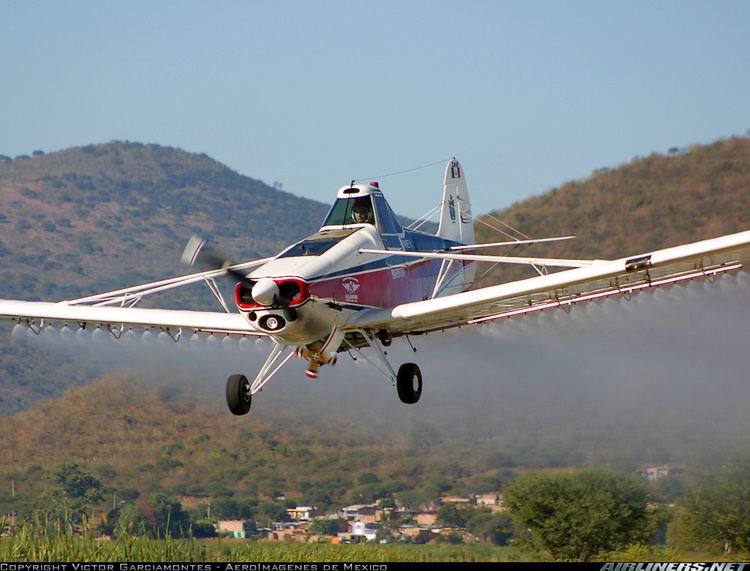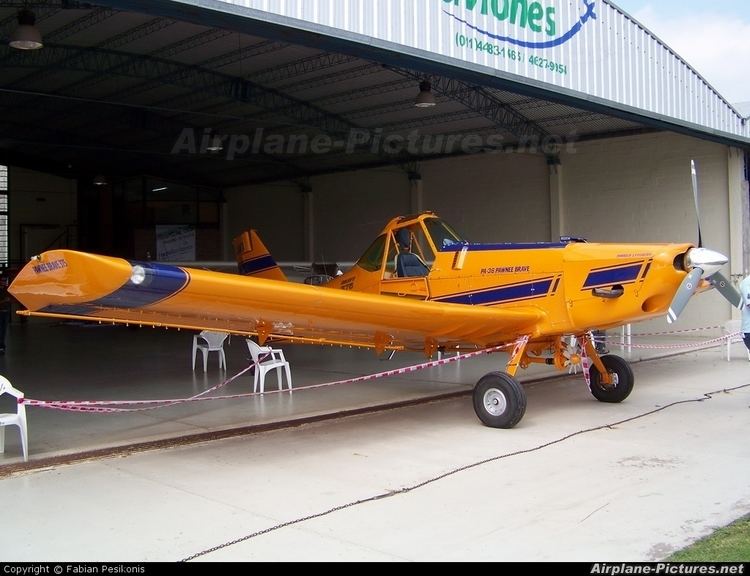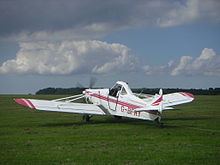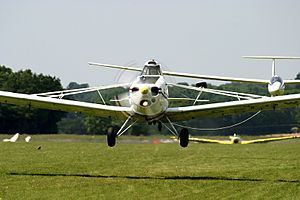 | ||
Similar Grob G103a Twin II, Piper PA 18 Super Cub, Piper PA 38 Tomahawk | ||
Rc piper pa 25 pawnee first flight los banos sbss
The PA-25 Pawnee was an agricultural aircraft produced by Piper Aircraft between 1959 and 1981. It remains a widely used aircraft in agricultural spraying and is also used as a tow plane, or tug, for launching gliders or for towing banners. In 1988 the design rights and support responsibility were sold to Latino Americana de Aviación of Argentina.
Contents
- Rc piper pa 25 pawnee first flight los banos sbss
- Aerotow rc models piper pa 25 pawnee let l 13 blanik
- Design and development
- Variants
- Accidents and incidents
- Specifications PA 25 235 Pawnee
- General characteristics
- Performance
- References

Aerotow rc models piper pa 25 pawnee let l 13 blanik
Design and development

Most agricultural aircraft before 1949 were converted military aircraft and it was in that year that Fred Weick based at Texas A&M University designed a dedicated agricultural aircraft the AG-1, the AG-1 first flew on 1 December 1950.

During 1953 Fred Weick was approached by Piper to become a consultant on the agricultural version of the PA-18 the PA-18A, in particular to design and test a distributor for dust and seeds. A few weeks later Piper sponsored Texas A&M University to design a dedicated agricultural aircraft based on the AG-1 but to use as many PA-18A and PA-22 components as possible, the resulting design the AG-3 was smaller than the AG-1 and had a steel tube fuselage and was fabric covered. The AG-3 was a single-seat low-wing monoplane with the wings braced to the fuselage with struts, it had a conventional landing gear with a tailwheel and was powered by a 135 hp engine. The single seat was placed high in the fuselage to give the best visibility and an 800 lb-capacity hopper was fitted in front of the cockpit.

The aircraft's flying tests were successful and in 1957 Weick was invited to join Piper at Vero Beach and the AG-3 was renamed the PA-25 Pawnee. The engine was upgraded to a 150 hp Lycoming O-320-A1A engine. Two pre-production aircraft were built at Vero Beach in 1957 and production started at Lock Haven in May 1959.

In 1962 another prototype was built at Vero Beach with a 235 hp Lycoming O-540-B2B5 engine and production aircraft were produced at Lock Haven from 1962. In 1964 the Pawnee B was introduced with a larger hopper and improved dispersal gear. The Pawnee C of 1967 was fitted with oleo shock-absorbers and other improvements; also in 1967, a 260 hp variant was introduced.

Early models of the Pawnee had a single fuel tank located between the agricultural hopper and the engine. The National Transportation Safety Board recommended to Piper Aircraft that the early model PA-25's with a fiberglass fuel tank be retrofitted with a rubber fuel cell to minimize the chance of catastrophic failure and fire resulting from a crash.
In 1974 the Pawnee D was introduced with the fuel tanks moved from the fuselage to the wings, the 260 hp variant was also available with either a fixed pitch or constant-speed propeller. Although still the same design as the "D", the 1980 and 1981 production aircraft were marketed as the Pawnee. The final production aircraft was completed at Lock Haven on 22 March 1981, the last of 5,167 Pawnees.
A useful design aspect was the ability to carry a mechanic on a jump seat fitted in the hopper to assist with operations at remote stations.
On April 15, 1988, Piper Aircraft, Inc. officially sold the PA-25 series aircraft to Latino Americana de Aviación S.A in Argentina. The sale included all drawings, engineering data, parts inventory, tools, catalogs, and manuals. All support of any nature became the responsibility of the new owners.
Variants
Accidents and incidents
Specifications (PA-25-235 Pawnee)
Data from: Macdonald Aircraft Handbook
